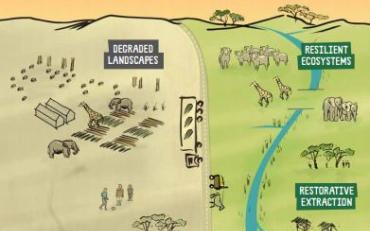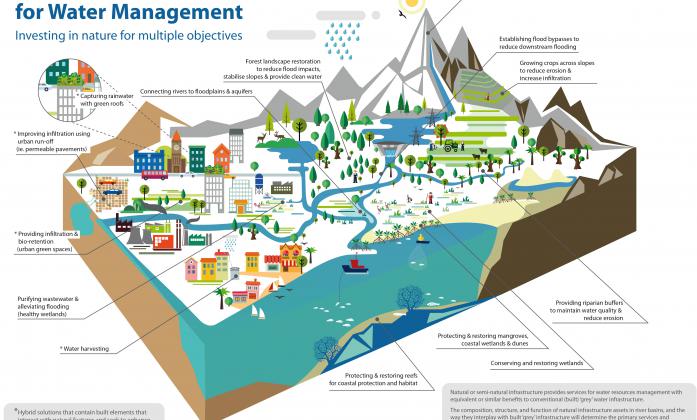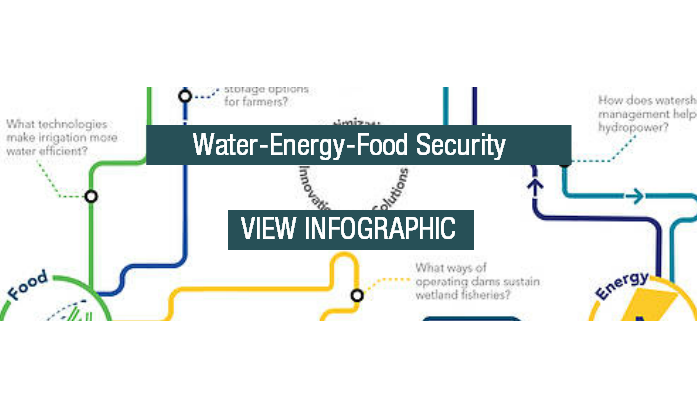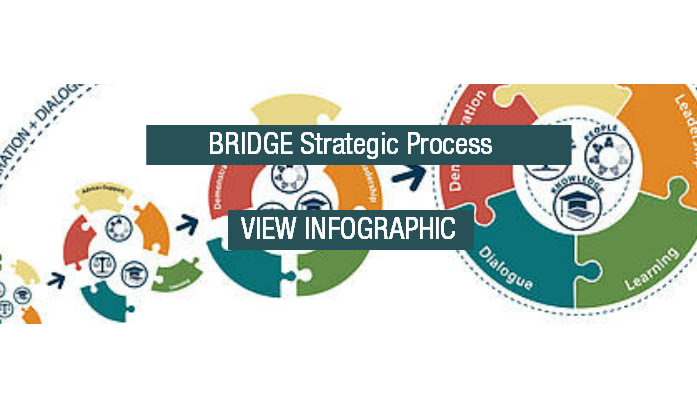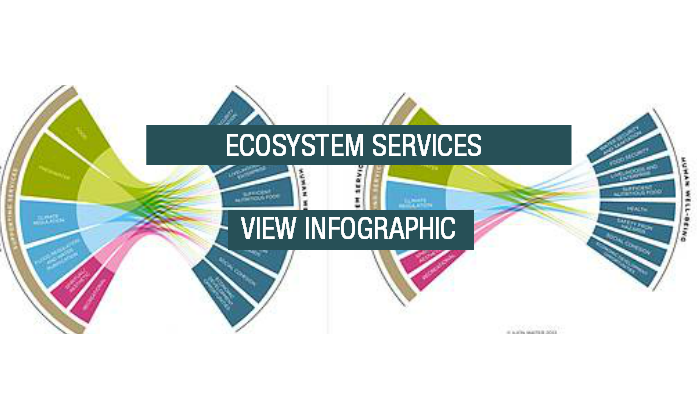Infographics are graphic visual representations of data or knowledge representing information in a quick, easy, and clear manner. The IUCN Global Water Programme infographics are free for use for educational and non-commercial purposes, provided due credit is given (©IUCN Water)
Click on the titles below, or in the right hand column, to go to the infographics.
Sustainability and inclusion for growth corridors in Africa
Making sustainability and inclusion part of African growth corridors is a win-win for all, including nature.
Introducing inclusive green growth into these landscapes, rather than continuing with business as usual has a number of positive outcomes. It supports partnerships between diverse actors for optimal resource allocation and sustainable ecosystem, while enabling long-term business competitiveness, strengthening sustainable and vibrant local communities, encouraging strong and inclusive institution and secures innovative investment flows.
More information on SUSTAIN: sustaininitiative.org
Going with the Flow - Value of Natural Water Infrastructure
Working with natural infrastructure optimises engineered infrastructure performance and financial benefits. Water-related ecosystem services perform an infrastructure-like function, such as wetlands filtering contaminated water, mangroves protecting shorelines from extreme weather events, floodplains absorbing excessive storm waters and lakes storing large water supplies. Yet, they are not built infrastructure; these natural water infrastructures are shaped, grown, eroded, or deposited by nature. Working with nature can optimise the performance and financial benefits of engineered infrastructures. An academic study valued the societal benefits of natural water infrastructure services (wetlands, lakes and rivers) at $29 trillion per year as of 2011.
Natural Infrastructure for Water Management - Investing in Nature for Multiple Objectives
Natural infrastructure represents the services that ecosystems provide that are similar to those provided by built or conventional infrastructure approaches. The composition, structure, and function of natural infrastructure in river basins, and the way it interplays with built infrastructure, determines the primary services and co-benefits produced.
More information:
Water-Energy-Food Security Nexus
Water, energy and food security rely on water infrastructure. Recognition of the closely bound interaction between water, energy and food production and use – the nexus - has led to new demands for water infrastructure and technology solutions. How is water infrastructure currently being used? What technologies are available to optimize across water supply sources? How can infrastructure be made more functional and sustainable to secure water supplies, food production and energy generation, without compromising the ecosystems we all rely on? Optimizing infrastructure for the nexus will mean mixing portfolios of engineered and natural infrastructure. Each component complements the other, with benefits in terms of cost-effectiveness, risk reduction, sustainable development and benefit sharing.
More information: Nexus Dialogue website
Building River Dialogue and Governance (BRIDGE) strategic process
Implementing water diplomacy is not a simple process. The IUCN BRIDGE project incorporates a number of mechanisms and tools. It uses demonstration of how to make cooperation operational as the basis for confidence and trust building through shared learning and joint action. Second, through learning, BRIDGE uses training and capacity building for multiple stakeholders in water governance, international water law, and benefit sharing. Third, it facilitates dialogue for consensus building using demonstration actions and learning events to catalyse new dialogues on technical, development and political matters. Fourth, BRIDGE implements leadership programmes supporting the empowerment of champions who can effectively advocate for mobilisation of water diplomacy. Finally, through support functions, BRIDGE provides advice on demand and technical assistance to governments and stakeholders on water governance in transboundary hot spots regionally and globally.
More information: IUCN BRIDGE
Ecosystem Services - Healthy versus Degraded system
The 2005 Millennium Ecosystem Assessment (MEA) report defined ecosystem services as “the benefits people obtain from ecosystems” and categorized them as supporting, provisioning, regulating, and cultural. The MEA explanatory diagram defined the links between human wellbeing and ecosystem services in terms of security, basic material for a good life, health and good social relations.
IUCN Global Water Programme decided to revisit this MEA diagram, redrawing it to further emphasize the complex and dynamic relationship between ecosystem services and the components of human well being from a freshwater perspective. The new diagram aims to more intuitively demonstrate the extent to which both rich and poor livelihoods are dependent on the sustainability of ecosystems and the variety of services that they provide.
Unseen and unrecognised - allocating water to nature in river systems
Water for nature is too often sidelined in discussions around built water infrastructure development and subsequent water allocation needs. With increasing demands for food and energy production from a growing global population, many countries look to engineered solutions to bring them water, food and energy security.
Research and dialogue needs to work with infrastructure development plans to inform the operational management of dams to reduce the negative impacts on the natural system and societies downstream. We need to better understand how much water we can allocate away from nature before we hit a tipping point and start causing irreparable damage. In this way, adjustments to engineered operations can favour allocating water back to nature – investing in ecosystem services and natural infrastructure.
